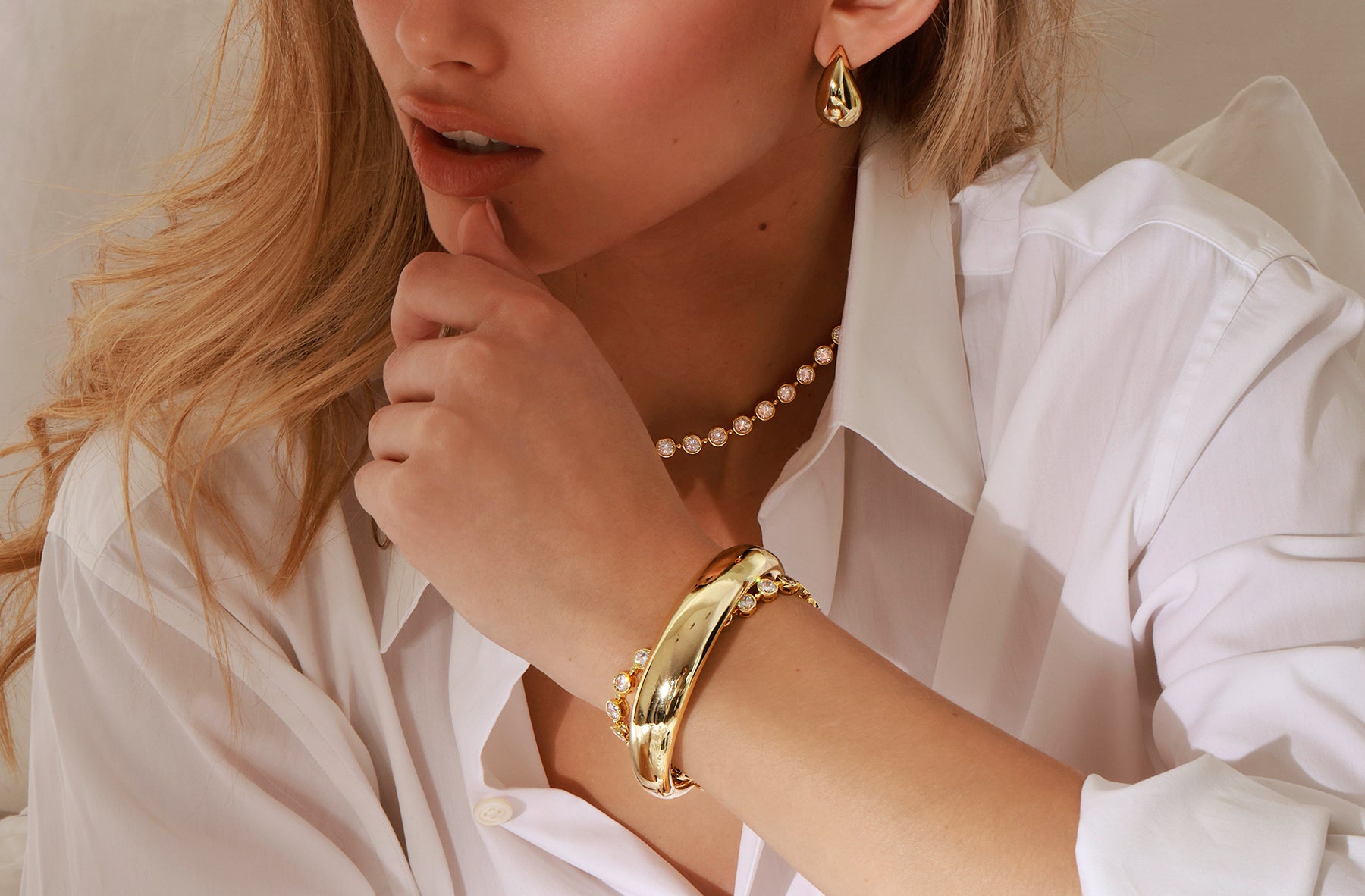What Does Opal Represent?
It’s no secret, we LOVE opal jewelry. But what is it about opals that make them so special? Well, it's not just about looking pretty (though they definitely do!). These gems have stories to tell, myths to unfold, and a history that's as intriguing as anything Netflix has to offer. So, buckle up as we unravel the mysteries and symbolism that make opals way more than just accessories.
The History of Opal

Picture this—you're strolling through the lively streets of ancient Rome, draped in your finest toga, and you catch sight of someone rocking an opal. Your heads would undoubtedly turn and for good reason. Opals were believed to carry the essence of all gemstones, displaying a kaleidoscope of colors that were straight-up hypnotic. But, beyond being eye-catching, these gems were more than mere accessories—they were talismans of good luck, treasured beyond measure.
Opals weren't just about putting on a show in the marketplace. Rulers, royals and emperors alike would embed them into their crowns to let people know with one look the level of power and prestige they were dealing with and make full use of the protective qualities they were thought to possess. They added a real “bling with benefits” to a royal look.
In Ancient Greece, opals were linked to the goddess of love, Aphrodite, adding a layer of mystique to its already enchanting persona. According to Greek mythology, opals were made of the tears of joy shed by Zeus when he defeated the Titans. This made opals a symbol of divine victory and the joyous celebration of love.
Speaking of myths, Opals have more than their fair share. In Arabian folklore, these gems were thought to be bits of fallen lightning, giving them that magical play-of-color. It's like they captured a piece of the sky's enchantment! Then, hop over to Aboriginal Australian legends, where opals were considered the Creator's footprints—literally, the divine left its mark on Earth through these mesmerizing gems.
These myths aren't just stories; they're like threads weaving opals into the very fabric of diverse cultures, giving each stone its own unique tale.
Fast forward to the Middle Ages, and watch as opals become all the rage among European royals. Queen Victoria, the trendsetter of her time, rocked opals like they were going out of style, making them the must-have gem of the 19th century.
But, opals weren't just about looking fancy; they were believed to bring good vibes. This wasn't just a European thing—across the globe, opals were seen as little carriers of good fortune.
What Do Opals Symbolize?

Alright, let's zoom into the present and talk about opals today. Opals are considered the shape-shifters of the gem world. Their meaning has evolved and changed through different cultures and centuries. Once upon a time, they were thought to be guardians against evil. Now? opals have turned into symbols of love and passion, adapting to the groove of our modern world.
Today opals cast their spell as the birthstone for October. But hold on—it's not just a random gem assigned to a month. Oh no, opals have a whole backstory that ties them to the mystical dance of changing seasons, making them the perfect fit for those born in the autumn breeze.
Opals also have a special relationship with astrology. If you're a Libra or Scorpio born in October, opals might just be your spirit stone. Word on the street is that opals bring balance, protection, and a bit of cosmic intuition to the party. So, whether you're celebrating an October birthday or just embracing the enchantment of opals, there's a cosmic connection waiting to be explored.

